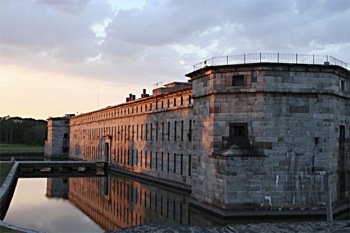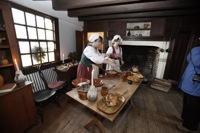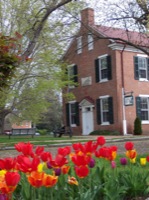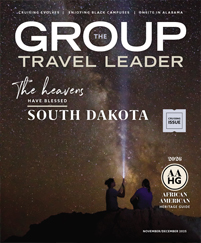
Big things come in small packages in Delaware.
Although it is the second smallest of the 50 states, and you can zip down its 96-mile length in less than two hours, there is a lot packed into Delaware’s three counties.
“Each county is significantly different than the one before it,” said Linda Parkowski, director of the Delaware Tourism Office. “There is a lot of diversity in the state.”
The choices for groups range from large mansions, gardens, art collections and performing arts in the north to miles of pristine beaches, seaside resorts and laid-back rural Amish settlements in the south.
As the first state to ratify the U.S. Constitution, Delaware is also filled with numerous historic sites — yes, George Washington did sleep there — that extend from Colonial times through the 20th century and the development of aviation.
“A lot of people don’t realize it, but we also have gaming,” said Parkowski. “There are racinos in New Castle County and Kent County.”
Race fans can experience the thrill of NASCAR or the excitement of horseracing. Throw in numerous festivals, a growing wine and brewery industry and a convenient mid-Atlantic location within easy driving distance of the East Coast’s major metropolitan areas, and Delaware has the complete package for groups.
Oh, and by the way, there is no sales tax in Delaware, making it a bargain hunter’s dream.
Colonial county
As you walk down the cobblestone streets of New Castle, “it’s almost like you had rolled the cards back before Colonial Williamsburg,” said Sarah Willoughby, executive director of the Greater Wilmington Convention and Visitors Bureau.
 |
|
| Courtesy Greater Wilmington CVB |
It was, after all, the historic 459-year-old northern Delaware port town with its large collection of Colonial-era architecture that the developers of Virginia’s Colonial Williamsburg studied in the 1930s.
“It is right along the Delaware River and was the first capital,” said Willoughby. “It was where William Penn first arrived before going on to Philadelphia. George Washington is known to have gone to a wedding there.”
The George Read House and Gardens, a 22-room Federal mansion with the region’s oldest surviving garden, is scheduled to reopen in the spring after a major renovation. “It was the largest and grandest at the time,” said Willoughby.
The 1732 courthouse, Delaware’s first capitol, is now a museum in downtown New Castle.
Another New Castle County town on the Delaware River with rich examples of 18th- and 19th-century architecture is Odessa, where the Historic Houses of Odessa Foundation preserves and interprets five properties, including a brick hotel and a former bank. The structures are furnished with a fine collection of regional decorative arts from 1760 to 1850.
“They are expanding and doing a lot of experiential activities, such as hearth-cooked meals,” said Willoughby, whose agency promotes the entire county.
Civil War-era military history is explored at Fort Delaware, a Union fort built in 1859 on an island in the Delaware River that once housed Confederate prisoners.
“You go out on a ferry and then on a tram up to the fort itself,” said Willoughby. “They have cannon they fire, and all the interpreters are in costume of the character they are portraying. They claim it is haunted.”
Brandywine beauty
New Castle County bridges central Delaware’s Colonial history with the Brandywine Valley, which extends into Pennsylvania with its rich duPont heritage of visual and decorative art, gardens and mansions.
“From a group standpoint, the Brandywine Valley is where most of the energy is,” said Willoughby.
Sitting in the middle is Wilmington, Delaware’s largest city.
 |
| Courtesy Greater Wilmington CVB |
Wilmington is home to the Delaware Art Museum with its world-renowned collection of British pre-Raphaelite art, the Delaware Historical Society museum, the restored 1871 Grand Opera House and the DuPont Theatre, where touring Broadway shows are a regular feature.
Wilmington’s old industrial waterfront along the Christina River has been a focal point of recent revitalization. The Russell W. Peterson Urban Wildlife Refuge, which opened on the riverfront last year, is an unusual combination of natural habitat in an urban setting.
The center encompasses a tidal marsh with more than 200 species of wildlife, and a four-story education center has indoor and outdoor exhibits, botanical gardens and a boardwalk that extends into the marsh.
“”You get to see eagles down there,” said Willoughby. “That is not something you normally think about.”
On the other end of the riverfront will be the Delaware Children’s Museum, set to open in April. “It is really cool, state-of-the-art and very hands on,” said Willoughby.









